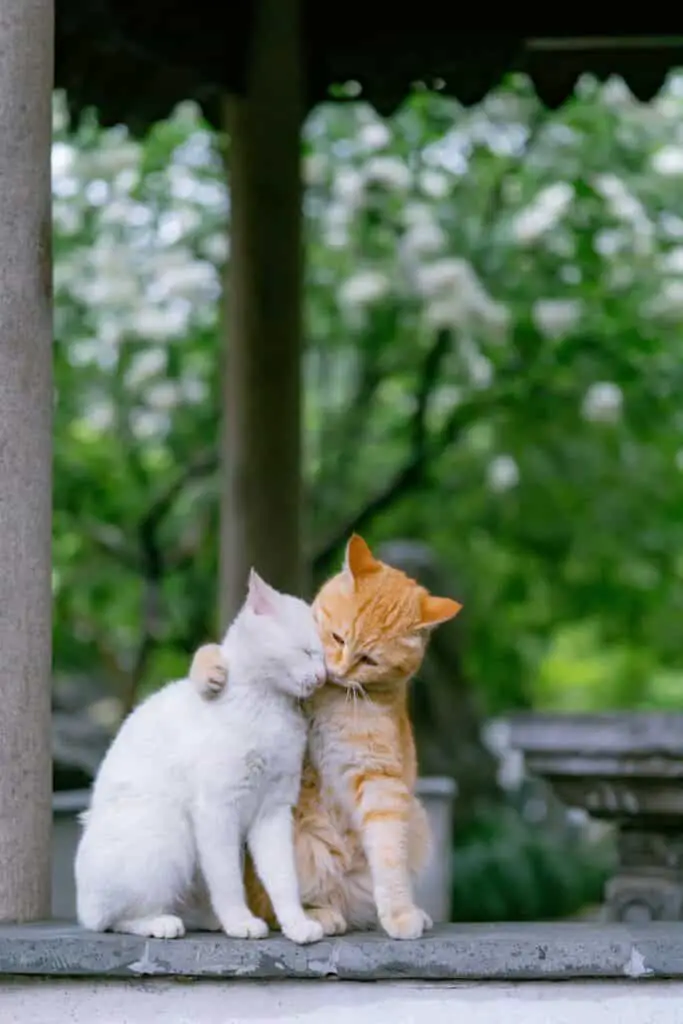Many cat owners often find themselves contemplating whether they should welcome another feline friend into their homes. Adopting a second cat can provide numerous benefits, not only for you, but also for your first cat. This article evaluates the various reasons and factors that come into play when considering the addition of another feline family member.

Cats are social creatures that can thrive in family-oriented environments, with behaviors like sleeping together, sharing feeding areas, and grooming one another. Introducing a second cat can enhance socialization opportunities for your first cat, particularly if they are shy or introverted. As they bond and interact, both cats can enjoy each other’s company, keeping one another entertained, and preventing feelings of loneliness or boredom.
When thinking about getting a second cat, it’s essential to weigh the pros and cons. There are cases where adopting a second cat may not be suitable due to specific circumstances, such as territorial issues or the potential for limited resources. Nevertheless, creating a harmonious multi-cat household opens up a world of companionship and enrichment for both you and your feline companions.
Understanding Feline Companionship
Natural Behaviors of Cats
Cats are often perceived as solitary animals, but they can also exhibit social behaviors when interacting with other cats. In their natural environment, feline family groups tend to live together, grooming one another, and sharing feeding areas. These interactions contribute to the emotional well-being of cats and help improve their quality of life.
When given the opportunity, cats engage in play and communicate with each other which can significantly impact their physical and mental health. Companionship with other feline friends can positively contribute to their social interaction and alleviate any signs of loneliness or depression.
Benefits of Having Multiple Cats
There are multiple advantages to having two or more cats at home. Here are some key benefits:
- Reduced anxiety: Cats with companions tend to have lower stress levels, allowing them to feel more relaxed and secure.
- Enhanced social skills: Interaction between cats can improve their social skills, making them more confident and adaptable to new situations.
- Increased exercise: Playing with each other can help cats stay more active, contributing to a healthy lifestyle and reducing obesity risks.
- Positive influence: A well-balanced and confident cat can have a positive influence on a shy or anxious cat, encouraging them to be more curious and brave in their surroundings.
It is important to consider each cat’s personality, age, and energy level when introducing a new feline companion. Ensuring a proper match can ultimately lead to a harmonious and beneficial relationship for both cats. As a result, feline companionship can provide cats with the opportunity to connect, socialize, and grow together, creating a happy and healthy environment for all.
Practical Considerations for a Multi-Cat Household
Space and Territory Management
Managing space and territory is crucial when introducing a second cat to your home. Cats can be territorial creatures, so it is important to create a comfortable environment where each cat has enough space to feel at ease.
To achieve this, make sure your home offers a variety of resting spots, hiding places and perches. This can be accomplished by providing cat trees, shelves, and repurposing empty cardboard boxes. Don’t forget to accommodate for vertical space as well, as cats love climbing and exploring high areas. Providing multiple lookout points can help prevent tension and territorial disputes between your feline companions.
Feeding and Litterbox Strategies
A harmonious multi-cat household also requires thoughtful planning around feeding and litterbox arrangements. When it comes to food and water, separate stations are key. Offering at least two bowls of food and water can help prevent competition and ensure that both cats have easy access to their resources. Placing the bowls at a reasonable distance apart can reduce stress and facilitate a positive mealtime experience.
| Considerations | Tips |
|---|---|
| Food and Water Bowls | Provide separate bowls for each cat, placed apart from each other |
| Mealtime Routine | Maintain a consistent feeding schedule to alleviate anxiety |
When it comes to litterboxes, the general rule is to have one box per cat, plus an extra one. Position these litterboxes in different areas of your home to reduce territorial conflicts. Keep in mind that cats prefer privacy when using their litterboxes, so avoid placing them in high-traffic spaces.
Here’s a quick reference list for multi-cat households:
- Provide multiple sleeping spots, hiding places and perches
- Utilize vertical space with cat trees or shelves
- Offer separate food and water bowls, placed apart from each other
- Maintain a consistent feeding routine
- Ensure there are enough litterboxes (one per cat, plus one extra)
By considering these practical steps, you can effectively manage space, territory, feeding and litterbox arrangements to create a harmonious and happy multi-cat household.
Introducing a New Cat to Your Home
Ensuring a Gradual Introduction
When introducing a new cat to your home, it’s essential to keep in mind the needs and feelings of your existing cat. A gradual introduction can help both cats adjust to each other’s presence and establish a harmonious relationship. Start by keeping the new cat in a separate room, often referred to as a sanctuary room. This room should be equipped with necessities like food, water, litter box, and toys.
During this initial phase, allow the cats to smell each other through the door but not see or make physical contact. After a few days, you can start letting them see each other from a distance, using a baby gate or a cracked door. Gradually increase the time and proximity of their encounters, while maintaining supervision. This process may take days or even weeks, but it’s crucial to create a positive and stress-free experience for both cats.
Creating a Stress-Free Environment
To ensure a successful introduction, strive to create a stress-free environment for both your existing cat and the new addition. This can be achieved by:
- Providing ample resources: Have separate food and water dishes, litter boxes, and sleeping areas for each cat to avoid competition and territorial disputes.
- Encouraging positive interaction: Use treats, toys, and playtime as incentives for both cats to understand that being together brings positive experiences. This helps build trust and strengthens their relationship.
- Maintaining routines: Keep your existing cat’s daily routine as consistent as possible to minimize anxiety and stress during the adjustment period.
Remember, patience and consistency are key to helping both your existing and new cat adjust to their expanded household. A friendly tone, understanding, and attention to their needs will help them feel comfortable and secure throughout the process.
Managing Cat Relationships and Health
Preventing and Managing Conflict
Introducing a second cat into your home can come with some challenges, particularly in relation to managing conflict and feline relationships. It is essential to follow a slow and gradual introduction process to minimize stress and avoid any potential clashes. Swapping bedding between the cats’ separate sleeping areas can help them become familiar with each other’s scents before they officially meet.
Cats can benefit from companionship, but individual cat personalities play a significant role in determining whether they’ll form a bond. It is not a guarantee that two cats will get along, and in some cases, rehoming might be the best solution if conflicts are persistent and insurmountable. However, taking the right approach to introducing a new cat can prevent many conflicts, leading to a happier and healthier environment for both cats.
Health Benefits and Considerations
Having a second cat can have numerous health benefits for both felines:
- Increased mental stimulation: Cats are curious and intelligent, and adding a second cat can provide more chances to explore, play, and interact. This keeps them from getting bored, ultimately benefiting their mental health.
- Reduced anxiety: A companion cat can provide comfort and support to an anxious cat, helping them feel more secure and relaxed in the home.
However, it is essential to consider that introducing a new cat can also come with some potential health considerations. For example, ensuring that both cats are up-to-date on their vaccinations before the introduction can help prevent the spread of any illnesses.








